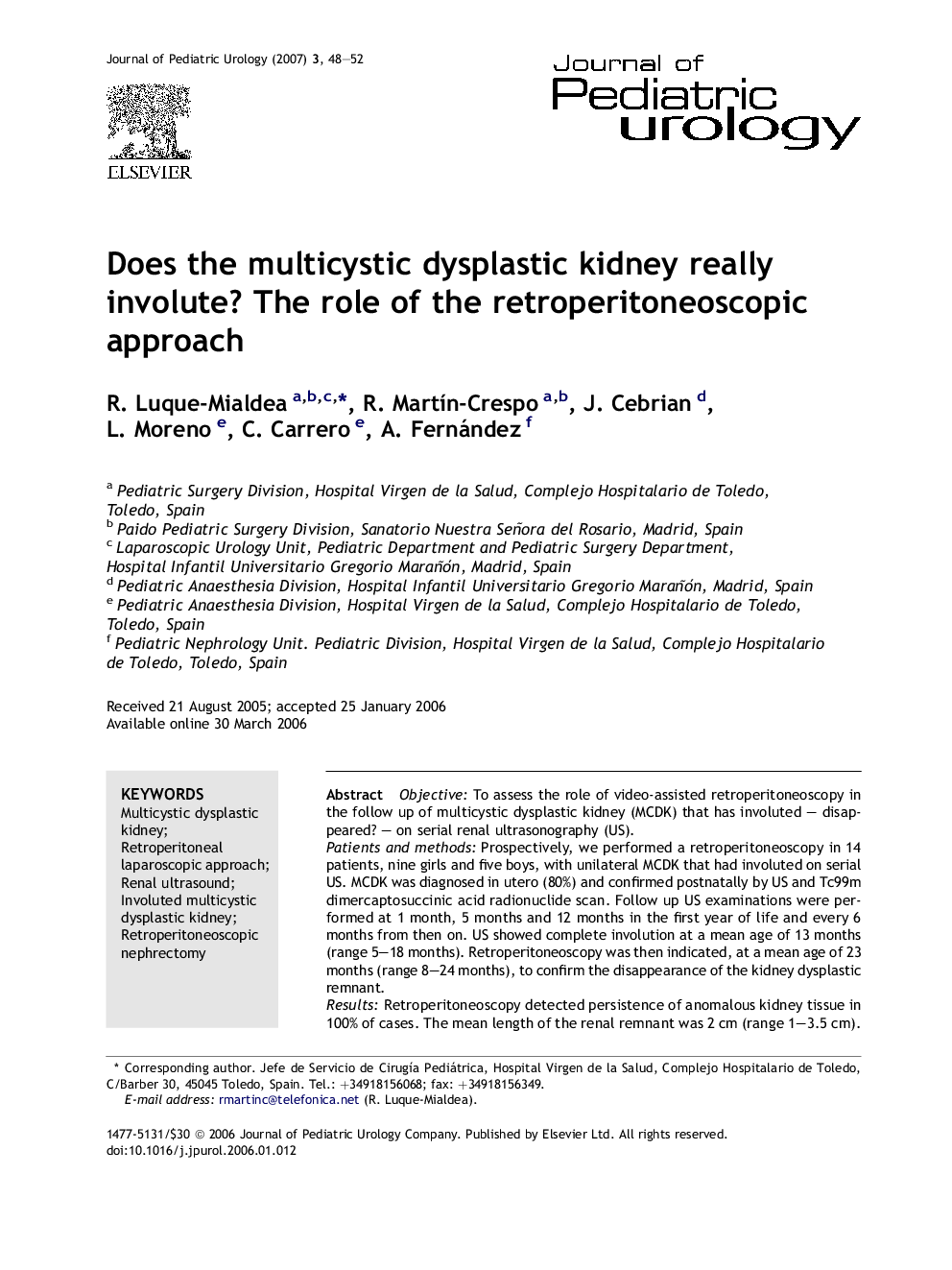| Article ID | Journal | Published Year | Pages | File Type |
|---|---|---|---|---|
| 4163755 | Journal of Pediatric Urology | 2007 | 5 Pages |
ObjectiveTo assess the role of video-assisted retroperitoneoscopy in the follow up of multicystic dysplastic kidney (MCDK) that has involuted – disappeared? – on serial renal ultrasonography (US).Patients and methodsProspectively, we performed a retroperitoneoscopy in 14 patients, nine girls and five boys, with unilateral MCDK that had involuted on serial US. MCDK was diagnosed in utero (80%) and confirmed postnatally by US and Tc99m dimercaptosuccinic acid radionuclide scan. Follow up US examinations were performed at 1 month, 5 months and 12 months in the first year of life and every 6 months from then on. US showed complete involution at a mean age of 13 months (range 5–18 months). Retroperitoneoscopy was then indicated, at a mean age of 23 months (range 8–24 months), to confirm the disappearance of the kidney dysplastic remnant.ResultsRetroperitoneoscopy detected persistence of anomalous kidney tissue in 100% of cases. The mean length of the renal remnant was 2 cm (range 1–3.5 cm). Two cases showed a pelvic ectopic location that was not detected by US before involution. The remnant was removed during the same procedure. Anatomo-pathological findings were found to be compatible with dysplastic renal tissue. There were no intra- or postoperative complications. All patients had a mean length of stay of less than 24 h.ConclusionsComplete resolution on US does not mean disappearance of MCDK, as US does not detect renal dysplastic remnants after cyst involution has occurred. The retroperitoneoscopic approach to the renal and pelvic area is a minimally invasive, safe and effective procedure to diagnose and treat the renal dysplastic remnant in US-involuted MCDK.
